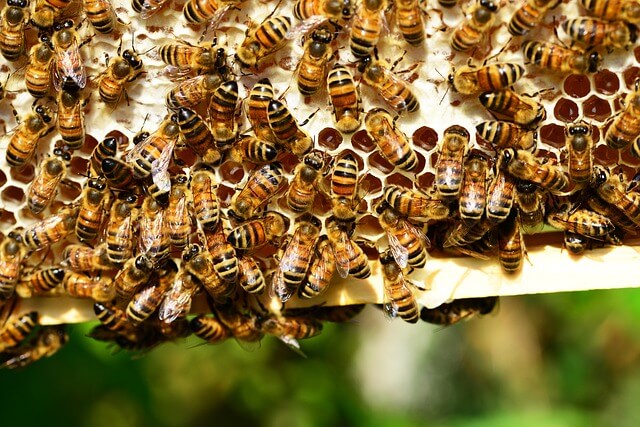Introduction
- Hive type
Most beekeepers standardise early on in using one particular design of hive. We 'chose' the National hive (the most popular in the UK) - actually the first hive was a gift from the church I (Dave) Pastor, and it was a National and so it seemed sensible to keep with that. Starting again we'd probably choose the Commercial for 2 reasons - firstly it has a larger volume which is much closer to that chosen by bees in the wild, and second the design is simpler for home production.
- The cost advantage
Our first two hives were assembled from flat pack red cedar kits supplied by Caddon Hives. These were very good value when compared to other suppliers, but neverthe less cost £XXX for a floor, brood, super x2, roof and queen excluder.
As one who enjoys woodwork, and already having all the tools necessary, I looked at the possibilty of making our own hives. Unless you have some cheap source of red cedar it is impossible to make them in that for the same price, that left softwood or some sheet material e.g. plywood + softwood for framing.
We decided to try making them from plywood + softwood for framing. We bought the Queen Excluder (anyone fancy cutting hundreds of exact sized slots in a piece of plywood? And I prefer the plastic ones anyway). We also bought the wire mesh for the varroa floor (try as I might I couldn't think of any alternative). The roof was covered in 1000 guage DPC sheet, and all exterior woodwork was painted with three coats of exterior masonary paint from Wilko's.
- How accurate do you need to be?
Although hives assembled from flat pack kits are very accurately cut, it is as well to remember that in the wild bees make use of holes in trees, cavity walls, chimneys, in fact anything that is of roughly suitable volume and dry! The big difference with bees kept in a hive is that the whole design works around the idea of moveable frames, and they only work well when the spaces around them match the bees' ideas of correct spaces.
In other words, more accuracy is needed in some places than others. Basically the internal dimensions need to be accurate but not the external ones. This means that the thickness of the ply and the thickness of the framing timber is not critical - just the cutting of the sheets and the assembly of the boxes.
- What tools are needed?
The following should be considered a minimum:
Hammer Hand saw Screwdriver Stanley knife Woodworkers square
tape measure or steel rule pencil exterior adhesive means to cut narrow channel (e.g. chisel or curcular saw)
The following tools will much simplify and speedup construction: Electric planer Electric mitre saw Electric circular saw Set of chisels Roofer's square
Clearly such a hive is not as inherently weatherproof and would require more maintenance (painting and recovering roof), and only time will tell how well they perform, but so far... they're working great!
